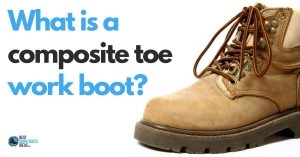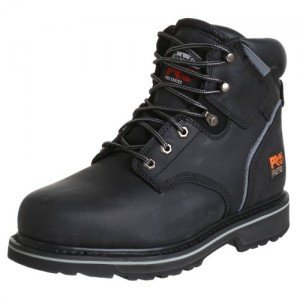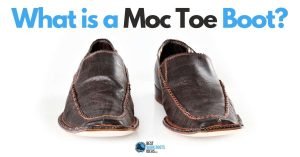What Are Logger Boots? Your Complete Free Guide of a Powerful Modern Work Boot
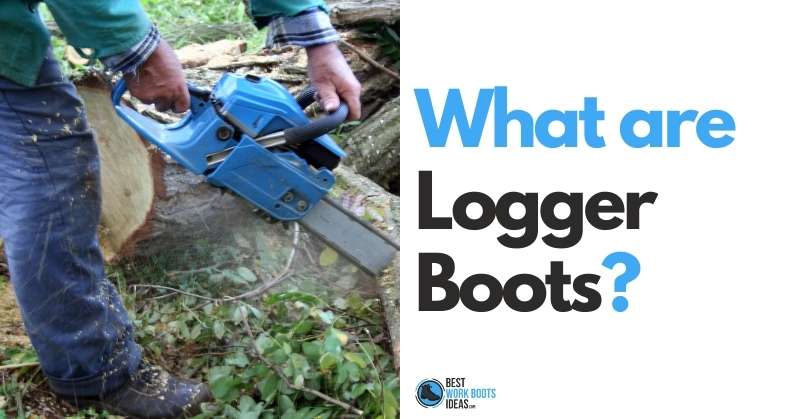
There are differences between various types of boots that make them suitable for particular work.
Sometimes the differences are minor and don’t make a significant impact.
At other times, it would be impossible to do the work without properly designed footwear.
Today, I’ll detail everything you need to know about logger boots and the features that make them critical for loggers to own.
Contents
What are Logger Boots?
Logger boots (loggers) are a particular type of work boot that protects the foot from the backbreaking work the lumber industry requires from its employees. The most notable features are reinforced steel shanks, tall throats, tall heels, and often gusseted tongues & kilties.
If you already know all about logger boots and are simply interested in grabbing a pair, check out our top picks for logger boots.
What are the Features of Logger Boots?
Logger boots come with many design features that make them suitable for the logging industry. They’re extra tall, give excellent support, and usually, come with protective features that regular work boots don’t have. Beyond all this, they’re made specifically with workers’ comfort in mind.
Outsole: Lugs
Loggers’ outsoles are made with durable outsoles that can withstand the toughest of terrains.
Unlike work boots designed for flat surfaces like asphalt boots or the wedge boots worn by ironworkers, the lugs and tread patterns on the outsoles of loggers are aggressive..
This design feature ensures that the wearer can get a firm grip on surfaces such as uneven terrain, muddy, rocky, or a combination of all those things.
Remember, loggers are literally walking around forests and the sides of mountains during their work.
It only makes sense that as a Logger, you’d want outsoles that really grip the earth or whatever it is you’re walking on.
Traction is therefore incredibly important.
Elevated Heels
One of the most notable features of loggers is their extremely tall heels.
This design is as different from zero-drop footwear as possible, but it’s not without good reason.
As I noted, these workers are often walking up hills and mountains, putting extra strain on their Achilles tendon.
The high heel works to limit how much of an incline the body experiences while walking at an angle. The last thing you want is to cause your back pain.
A raised heel limits how far the foot has to bend before it touches the ground.
The high heel also helps when you put on metal spurs, spikes, climbers or whatever other name you have for them.
Although this is something of a parlor trick the boot is playing on the body, it doesn’t matter; it works.
At the end of the day, it doesn’t matter if the body is fooled into thinking something else is happening, just go with what works.
Construction Style of Logger Boots
Almost all logger boots will be made of full-grain leather using Storm welt or Goodyear Welt construction methods.
These methods provide the highest levels of stability, durability, and waterproofing that a leather boot can deliver.
Beyond the performance, these construction styles also make it possible to resole your boot when it’s time for that.
This will save both money and discomfort that comes with getting a new boot.
This is not to say that you can’t find logger boots made with cement or other construction styles.
It’s just most common to see welted boots on workers in the lumber industry.
New, synthetic uppers and hybrid leathers are making their way into the market, but leather still reigns supreme with workers.
Protective Features of Logger Boots
Besides the toe cap that lands the ASTM f2413 rating and defines a safety boot, logger boots often have other features that go above and beyond the toes.
This is due to the frequency of falling and flying objects that are part of the everyday work in the logging industry.
Metatarsal Guards/Boots
Many logger boots are now made with a metatarsal guard, either internally or externally.
Keep in mind, all metatarsal boots are not necessary loggers, and all loggers are not metatarsal boots.
You have to look at the features of the particular pair you’re looking at to tell what’s what.
Metatarsal guards protect the metatarsal bones on the top of the foot from falling or crushing objects.
Essentially, they’re an extension of the toe cap, just for the instep of your foot.
This is a huge feature that lumber workers highly value, and it’s only a matter of time in the logging industry before a flying log unexpectedly comes your way.
Metatarsal boots and steel toe boots both offer protection but differ in the areas they protect.
Protective Uppers
While it goes without saying that leather boots protect the foot, many logger boots go a couple of steps further.
First, the leather construction on loggers is often twice as thick as regular work boots.
This thickness provides greater ankle support, to the foot and provides greater protection against impact and cuts.
It’s not uncommon for the uppers on loggers to be chemically resistant as well.
Beyond thicker, safer leather, some boots are rated chainsaw resistant by ASTM f1818.
This is a level of protection that you won’t find in almost any other work boots.
ASTM f1818 is next-level protection that, while it will cost you, is totally worth it if you’re a person operating chainsaws.
Anyone who has operated a chainsaw, or even a circular saw, knows that wood grain can cause blades to behave very strangely.
Even when it seems you’ve got a clear cut, the edge can catch a knot or some object embedded in the wood and forcefully spit the blade back at its user.
Not only are these moments terrifying, but they’re also incomparably dangerous.
This reality makes chainsaw-resistant uppers priceless and worth it to get.
Supportive Shank
Getting to the design features you might not know about and aren’t often advertised; I’m talking about support here!
Logger boots are usually built with supportive steel shanks that limit the stress felt by your body
It’s no secret that lumber workers have to be on their feet almost all day; steel shanks help offset that pain.
Remember, the shank is not as substantial as they are linemen’s boots.
Often, linemen’s and logger’s boots are mistakenly assumed to be the same thing.
While they share some similarities, they’re different boots.
Lacing, Height, and Tongue
Logger boots are designed with what might look like an excessive height and lacing, but there’s a reason.
There are also supportive features that emerge as a result of multiple design choices.
Lastly, the tongue design is often unique and helps avoid peak discomfort.
The height and excessive lacing work together on logger boots to provide support, protection, and comfort.
The support comes from the height of the boot, usually over 9 inches, that makes sure the ankle is firmly in place.
In addition to the support it provides, this also protects more of the lower leg from flying objects.
The many eyelets work to ensure that the person wearing such a tall boot can evenly secure it to their foot.
Just like military boots, it’s not effective or safe to only tighten the uppermost laces.
This design allows distribution of pressure across the boot for a firm and comfortable fit.
Often, logger boots have what’s called a gusseted tongue.
Even though you think you don’t know what that means, you do, I promise.
A gusseted tongue refers to a design in which the tongue and the lace stay are connected by a piece called the gusset.
In the most straightforward way, this is just a pocket whose purpose is to prevent any debris from working its way around the tongue.
For loggers, this is extremely important as they’re constantly in a storm of flying woodchips.
Given enough time, and it’s not very long, wood chips get in a boot without a gusset.
What are Logger Boots Good For?
Logger boots are great for any work or activity where protecting your feet is the priority. They’re almost unmatched in their ability to protect feet from a number of accidents or environmental concerns. Keep in mind, for this protection you’ll be trading mobility and comfort.
Why Do Logger Boots Have Kilties?
Kilties are a small accessory for logger boots that prevent wood chips or other debris from sneaking into the base of the tongue. While gusseted tongues are much more effective at this task, kilties are still present when there is no gusset or simply as a stylistic choice.
You can’t miss them as they look like tassels.
Are Caulk Boots and Logger Boots the Same Thing?
No, they are different things. Caulk boots are a variation of logger boots that have spiked outsoles for better grip on wood. This specialty boot is often referred to by many names, including calk boots, timber boots, cork boots, and (incorrectly) logger boots.
Remember that you should only get caulk boots unless you’re an experienced logger who understands their needs or a superior has directed you to. This style of boot would be extremely easy to hurt oneself wearing without the proper experience.
Why Do Logger Boots Have High Heels?
Logger boots have high heels to limit the stress experienced by the body when walking uphill. Tall heels change the angle at which the foot makes contact with the walking surface. If the foot is on an incline, the Achilles tendon needs to stretch more than it does on a flat surface.
Be careful going downhill, though, as the taller heels will make the person wearing them lean forward, ever so slightly. This benefit going up could have some severe consequences for the way down if you’re not careful.
What are the Downsides of Logger Boots?
Logger boots are bulky and heavy. The benefits they provide are a double-edged sword, as the protection they provide makes them tiring to wear, make your feet hot, and limit your natural stride. This is a trade-off that workers must accept about logger boots, there’s no way around it.
Are Logger Boots Good for Construction Work?
Logger boots aren’t recommended for construction work due to their size and weight. It’s great to have extra protection and stability on a mountainside, but it’s less necessary on a job site. For an average job, loggers would leave your feet hot, tired, and unnecessarily overworked.
You might want to read our article on construction boots for more information.
Are Logger Boots Good for Concrete?
If your primary job role is to be on uneven outside surfaces where you’re battling the elements and climbing a lot then a logger boot may be a good option. If you work on smooth surfaces all dat on a construction site then this isn’t recommended.
If you’re a contractor and planning on wearing a logger boot on a construction site, you’ll get tired pretty quickly. The weight and stiffness of the boot isn’t ideal for a construction environment.
Don’t confuse the climbing part with a lineman boot as there is a difference.
Are Logger Boots Good for Hiking?
Loggers could be a good choice if you’re going for a long hike, multiple days or weeks. They’re supportive, protective, and very reliable. They are sure to tire your feet and legs out quicker than a pair of hiking boots, but they might keep your feet safer than hiking boots.
If you’re just going out for a couple of hours, it’s not recommended to use logger boots. You’ll definitely be less comfortable, less mobile, and way more tired after the hike.
If you’re interested in knowing more about hiking boots vs work boots then feel free to read the article we wrote on it.
Logger Boot Brands
Below are some of the most popular brands when it comes to thinking about your next logging boot.
Georgia Boot
At the time of writing this, there were 24 Men’s Logger Boots on the official Georgia Boot website.
There are an array of options available to you.
Steel toe, waterproof and composite toe logger boots are all available.
For example the Georgia Boot Steel Toe Gore Tex Waterproof 400G insulated logger boot (G9382) has pretty much everything you’d need as a logger.
Some of the featured include;
400g of Thinsulate insulation to keep you warm when it gets cold.
The Steel shank adds to the arch support.
ASTM-F2413 compliant which means your feet will stay protected.
Waterproof to keep your feet dry.
Goodyear welt construction so your shoe can be resoled if required.
Chippewa Boots
Looking at Chippewa logger boots on their site, they also have about a dozen or so logger boots.
For example the Valdor model style 73238 is an insulated boot which comes with a composite toe.
The Arador model (style 25407) is steel toe, waterproof and assembled in the USA.
Danner Boots
Not a huge selection to choose from, but Danner Loggers are well respected.
Made of full grain leather, the Danner’s are waterproof have a Vibram outsole and come with electrical hazard protection.
Do check the style number though to ensure they have the features you need.
Carolina Boots
If you’re after a Carolina logger boot then there are several styles you can consider.
Pitstop Logger (Steel Toe)
Elm Int (Composite Toe)
Spruce
Poplar
Driller
The list goes on.
Wrapping Up and Logging Out
By now, I’m sure you’ve got a well-rounded understanding of logger boots and their features.
Remember, it’s best to make sure you’re in a situation that actually requires the extra protection of loggers, or you’ll be unnecessarily tiring yourself out.
There are plenty of brands that offer options for both women and men’s logger boots.

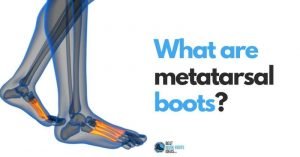
![Cement Construction Boots: Your Complete [FREE] Guide](https://www.bestworkbootsideas.com/wp-content/uploads/2021/06/cement-construction-boots-featured-image-300x157.jpg)
